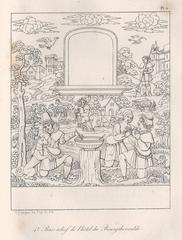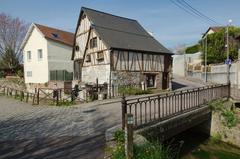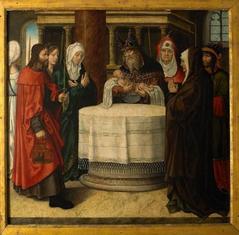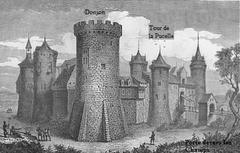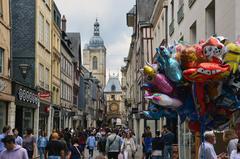
Ancien Hôtel-De-Ville De Rouen: Visiting Hours, Tickets, and Historical Sites Guide
Date: 03/07/2025
Introduction: The Significance of the Ancien Hôtel-De-Ville De Rouen
Centrally located in the heart of Rouen, France, the Ancien Hôtel-De-Ville de Rouen (Old Town Hall) is a remarkable emblem of the city’s rich civic heritage and architectural splendor. Its layered history—from Gothic origins in the 15th century to Renaissance and neoclassical transformations—reflects the evolution of Rouen as a hub of governance, culture, and art. Adjacent to prominent landmarks like the Place du Vieux Marché, where Joan of Arc met her fate, and within walking distance of the iconic Gros-Horloge and Cathédrale Notre-Dame, this former city hall provides a unique lens through which to explore Normandy’s past.
This guide presents comprehensive information on visiting the Ancien Hôtel-De-Ville de Rouen, including its architectural highlights, visitor access, practical travel tips, and surrounding attractions. For the latest details, always consult the official Rouen city website and the Normandy tourism portal.
(Routard, History Tools, POP: Plateforme ouverte du patrimoine)
Contents
- Introduction
- Historical and Architectural Overview
- Civic and Cultural Significance
- Visitor Information: Hours, Tickets, Accessibility
- Architectural Highlights
- Nearby Attractions
- Visuals and Photography Tips
- FAQs
- Conclusion and Call to Action
- Sources
Historical and Architectural Overview
Origins and Evolution
The Ancien Hôtel-De-Ville de Rouen was initially constructed in the late Middle Ages near the Place du Vieux Marché—forever linked with the story of Joan of Arc (Routard). By the 16th century, the municipal building expanded to incorporate sections of the former Abbey Saint-Ouen. Architecturally, it is a blend of Gothic, Renaissance, and classical styles—its facades adorned with Corinthian columns, ornate stonework, and the city’s coat of arms.
Throughout the 19th century, the building was enlarged and lavishly decorated, reflecting Rouen’s prosperity. Key features such as the grand staircase and council chambers offer a window into the city’s administrative and artistic legacy.
Architectural Highlights
- Facades: The building’s exterior on rue du Gros-Horloge showcases Renaissance elegance, marked by intricate carvings and harmonious proportions.
- Clock Tower: The crowning clock tower (added 1527–1529) is a Renaissance marvel, still chiming the hours for Rouen’s residents.
- Rooflines: Steep, dormer-punctuated slate roofs exemplify Norman architecture.
- Interior: Notable spaces include the Grand Salon with gilded moldings, the solemn Salle des Procureurs (site of Joan of Arc’s trial), and monastic vaults inherited from the former abbey (History Tools).
Restoration and Preservation
Having survived wartime destruction, notably during World War II, the Ancien Hôtel-De-Ville underwent careful restoration. Its designation as a Monument Historique since 1948 ensures ongoing conservation (POP: Plateforme ouverte du patrimoine).
Civic and Cultural Significance
Role in Governance and Community
For centuries, the Ancien Hôtel-De-Ville was the heart of Rouen’s municipal administration, hosting city council meetings, official receptions, and public ceremonies. Its grand halls witnessed key moments in the city’s evolution—from medieval trade to revolutionary fervor and modern civic life (thecrazytourist.com).
Symbolism and Urban Identity
The building’s prominent urban placement—adjacent to the Palais de Justice and central squares—reinforces its status as a focal point for public life. The bell tower, visible throughout the city, historically called citizens to celebration or crisis. Its preservation stands as a testament to Rouen’s commitment to its cultural legacy.
Cultural Engagement
The Ancien Hôtel-De-Ville has hosted art exhibitions, public lectures, musical performances, and literary events. Local festivals, such as Bastille Day and commemorations of Joan of Arc, frequently include ceremonies within its walls, connecting the city’s past to its present vibrancy (intrepidscout.com).
Visitor Information: Hours, Tickets, and Access
Location and Getting There
- Address: 60–68 rue du Gros-Horloge and 1 rue Thouret (POP: Plateforme ouverte du patrimoine)
- Access: Easily reached by foot from Rouen’s main train station (Gare de Rouen-Rive-Droite), with nearby public transportation (trams, buses), and public parking for drivers.
Visiting Hours and Ticketing
- Interior Access: As of 2024, the building is not open for regular interior visits. The exterior can be admired at any time.
- Special Events: Interior access is occasionally possible during European Heritage Days (September) or local festivals. Tickets (if required) are available via the Rouen Tourist Office or the city’s website. Advance checking is essential.
- Admission: No tickets required for viewing the exterior. Special event entry may have a nominal fee.
Accessibility
- Mobility: Surrounding streets are pedestrian and cobbled, which may present challenges for those with reduced mobility.
- Building Access: The building is partially accessible, and accommodations can be arranged by contacting the administration in advance.
Travel Tips
- Best Times to Visit: Weekday mornings or late afternoons are quieter. Spring, autumn, and festival periods offer enhanced experiences.
- Weather: Normandy weather is variable—carry an umbrella or raincoat.
- Essentials: Comfortable shoes recommended for walking the historic center.
Guided Tours and Visitor Experience
- Guided Tours: Walking tours often include the Ancien Hôtel-De-Ville as a highlight, especially during heritage events. Bookings can be made through the Tourist Office or local operators.
- Self-Guided Visits: The building is a key stop on self-guided walking tours of Rouen’s medieval and Renaissance heart.
- Photography: Best light is in the morning or late afternoon. Early visits ensure fewer crowds for unobstructed photos.
Nearby Attractions
Enhance your visit by exploring these sites, all within walking distance:
- Gros-Horloge: The famed astronomical clock and tower.
- Cathédrale Notre-Dame de Rouen: A Gothic masterpiece with a storied history.
- Place du Vieux-Marché: Site of Joan of Arc’s execution, now a vibrant square.
- Abbaye Saint-Ouen & Hôtel-de-Ville Garden: The current city hall with tranquil gardens.
- Palais de Justice: A striking example of Norman Renaissance architecture.
Cafés, bakeries, markets, and shops line the surrounding streets, making exploration both cultural and culinary.
Rouen’s Cultural Calendar
The Ancien Hôtel-De-Ville area is the backdrop for:
- European Heritage Days (September): Occasional interior access.
- Local Festivals: Including cinema, music, and traditional fairs like the Great Armada (every five years) and Saint-Romain Fair (France-Voyage Events in Rouen).
- Weekly Markets: Fridays and Saturdays, with a festive atmosphere enhanced in December by the Christmas market.
Visuals and Media
- Photography: Alt tags should include descriptors like “Ancien Hôtel-De-Ville Renaissance facade Rouen” or “Rouen city hall clock tower.”
- Virtual Tours: Check the official tourism website for multimedia resources and virtual exploration options.
Frequently Asked Questions (FAQ)
Q: Is the Ancien Hôtel-De-Ville de Rouen open for visits?
A: The interior is not regularly open; exterior views are accessible at all times. Interior access is possible only during special events.
Q: Are tickets required?
A: No tickets are needed for exterior viewing. Tickets may be required for guided tours during special openings.
Q: Is the building accessible for those with limited mobility?
A: The area is partially accessible; contact the administration for specific accommodations.
Q: Are guided tours available?
A: Yes, especially during festivals and European Heritage Days. Book through the Rouen Tourist Office.
Q: What is the best way to reach the site?
A: Walk from Rouen’s main train station or use local public transport. Parking is available but limited.
Conclusion and Call to Action
The Ancien Hôtel-De-Ville de Rouen is an architectural gem and a testament to the city’s resilience, civic pride, and layered history. While regular interior access is limited, its magnificent facades and central location in Rouen’s historic core make it an essential stop for architecture lovers, historians, and travelers alike. Combine your visit with nearby sites, enjoy Rouen’s vibrant streets and markets, and immerse yourself in Normandy’s rich cultural legacy.
For event schedules, guided tours, and the latest visitor information, consult the official Rouen tourism website or the Normandy tourism portal.
Enhance your experience with the Audiala app for self-guided audio tours, and follow us on social media for more travel inspiration.


